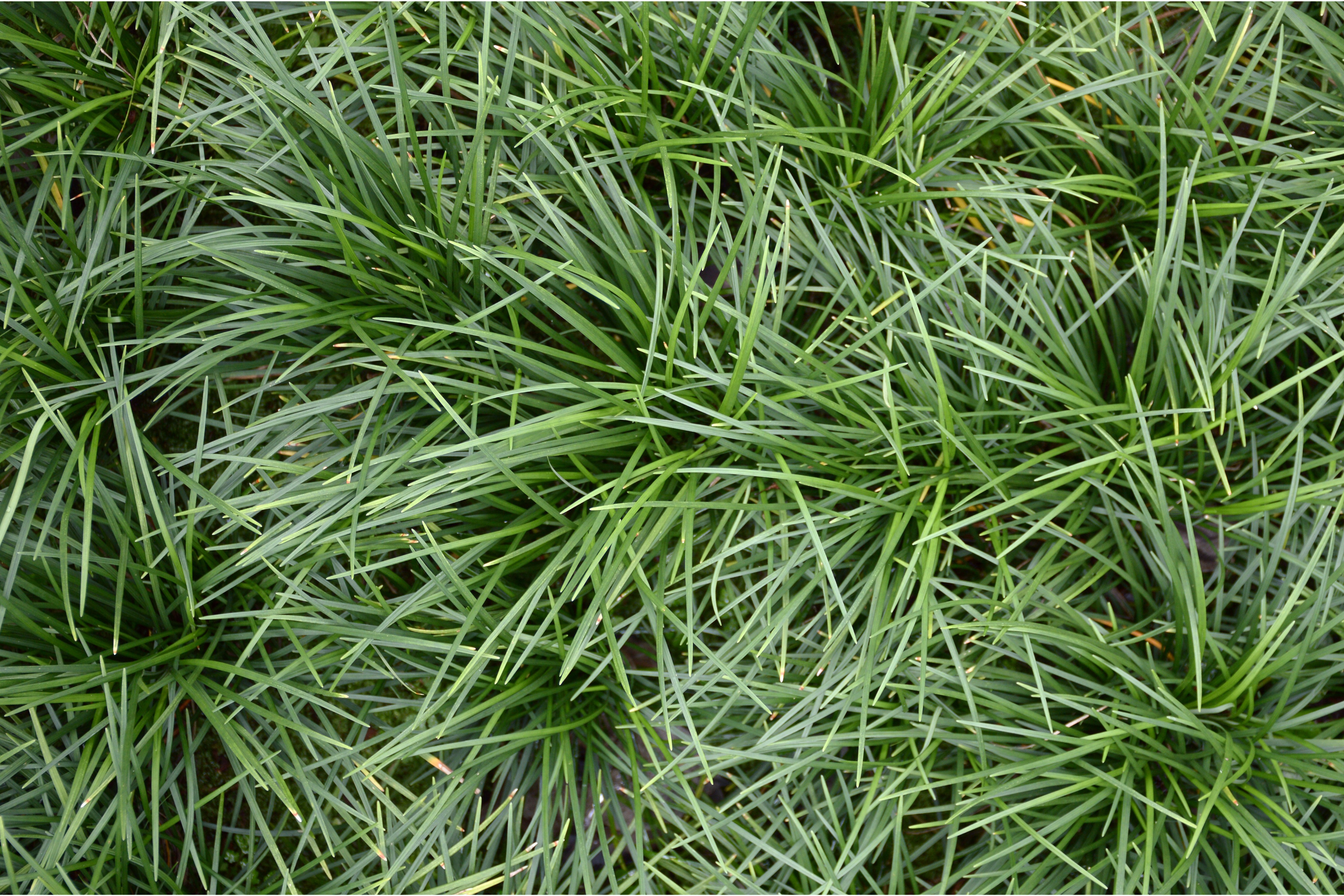Dwarf lilyturf
(Ophiopogon japonicus)

Description
Ophiopogon japonicus (dwarf lilyturf, mondograss, fountainplant, monkeygrass; Japanese: ryu-no-hige ("dragon's beard") or ja-no-hige ("snake's beard") is a species of Ophiopogon native to China, India, Japan, and Vietnam. It is an evergreen, sod-forming perennial plant. The leaves are linear, 20–40 cm long. The flowers are white through pale lilac, borne in a short raceme on a 5- to 1-cm stem. The fruit is a blue berry, 5 mm in diameter. Underground, this species has large stolons with tuberous roots. It is grown as an ornamental plant, providing excellent groundcover. Several cultivars have been selected, including 'Albus' (white flowers), 'Compactus' and 'Kyoto Dwarf' (dwarf forms, not over 4–5 cm tall), and 'Silver Mist' (variegated, with white-striped leaves). It is often sold as a decorative plant for freshwater aquaria, but because it is not a true aquatic plant, it can live for a few months underwater before it dies. While hardy to temperatures of about – 20°C when dormant in winter outdoors in normal soil, when kept fully submerged, it requires water temperatures of 18–25°C. It grows well in full sun or partial shade. Propagation is from side shoots. In traditional Chinese medicine, both O. japonicus plants and tubers are known as mai men dong. Tubers are used as the cardinal herb for yin deficiency. According to the "Chinese Herbal Medicine Materia Medica", the herb is sweet, slightly bitter, and slightly cold; enters the heart, lung, and stomach channels; nourishes the yin of the stomach, spleen, heart, and lungs; and clears heat and quiets irritability. Liriope spicata is used as a substitute. Ophiopogon (lilyturf) is a genus of evergreen perennial plants native to warm temperate to tropical East, Southeast, and South Asia. Despite their grasslike appearance, they are not closely related to the true grasses, the Poaceae. The name of the genus is derived from Greek Όφις ophis, "snake", and πόγὦν pogon, "beard", most probably referring to its leaves and tufted growth. In the APG III classification system, it is placed in the family Asparagaceae, subfamily Nolinoideae (formerly the family Ruscaceae). Like many lilioid monocots, it was formerly classified in the Liliaceae. They grow from short rhizomes, and bear tufts of leaves, from which flowers emerge in racemes held on short stems above the leaves.
Taxonomic tree:







